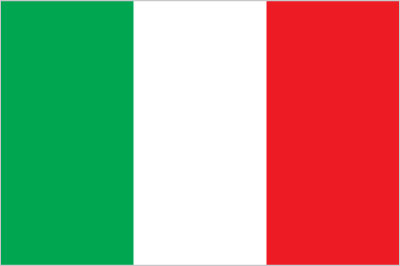
Italy became a nation-state in 1861 when the regional states of the peninsula, along with Sardinia and Sicily, were united under King Victor EMMANUEL II. An era of parliamentary government came to a close in the early 1920s when Benito MUSSOLINI established a Fascist dictatorship. His alliance with Nazi Germany led to Italy's defeat in World War II. A democratic republic replaced the monarchy in 1946 and economic revival followed. Italy is a charter member of NATO and the European Economic Community (EEC). It has been at the forefront of European economic and political unification, joining the Economic and Monetary Union in 1999. Persistent problems include sluggish economic growth, high youth and female unemployment, organized crime, corruption, and economic disparities between southern Italy and the more prosperous north.
coal, mercury, zinc, potash, marble, barite, asbestos, pumice, fluorspar, feldspar, pyrite (sulfur), natural gas and crude oil reserves, fish, arable land
arable land: 22.57%
permanent crops: 8.37%
other: 69.07% (2011)
61,680,122 (July 2014 est.)
country comparison to the world: 24
Italian (includes small clusters of German-, French-, and Slovene-Italians in the north and Albanian-Italians and Greek-Italians in the south)
Christian 80% (overwhelmingly Roman Catholic with very small groups of Jehovah's Witnesses and Protestants), Muslim (about 800,000 to 1 million), Atheist and Agnostic 20%
Italian (official), German (parts of Trentino-Alto Adige region are predominantly German-speaking), French (small French-speaking minority in Valle d'Aosta region), Slovene (Slovene-speaking minority in the Trieste-Gorizia area)
definition: age 15 and over can read and write
total population: 99%
male: 99.2%
female: 98.7% (2011 est.)
Rome
republic
17 March 1861 (Kingdom of Italy proclaimed; Italy was not finally unified until 1870)
Republic Day, 2 June (1946)